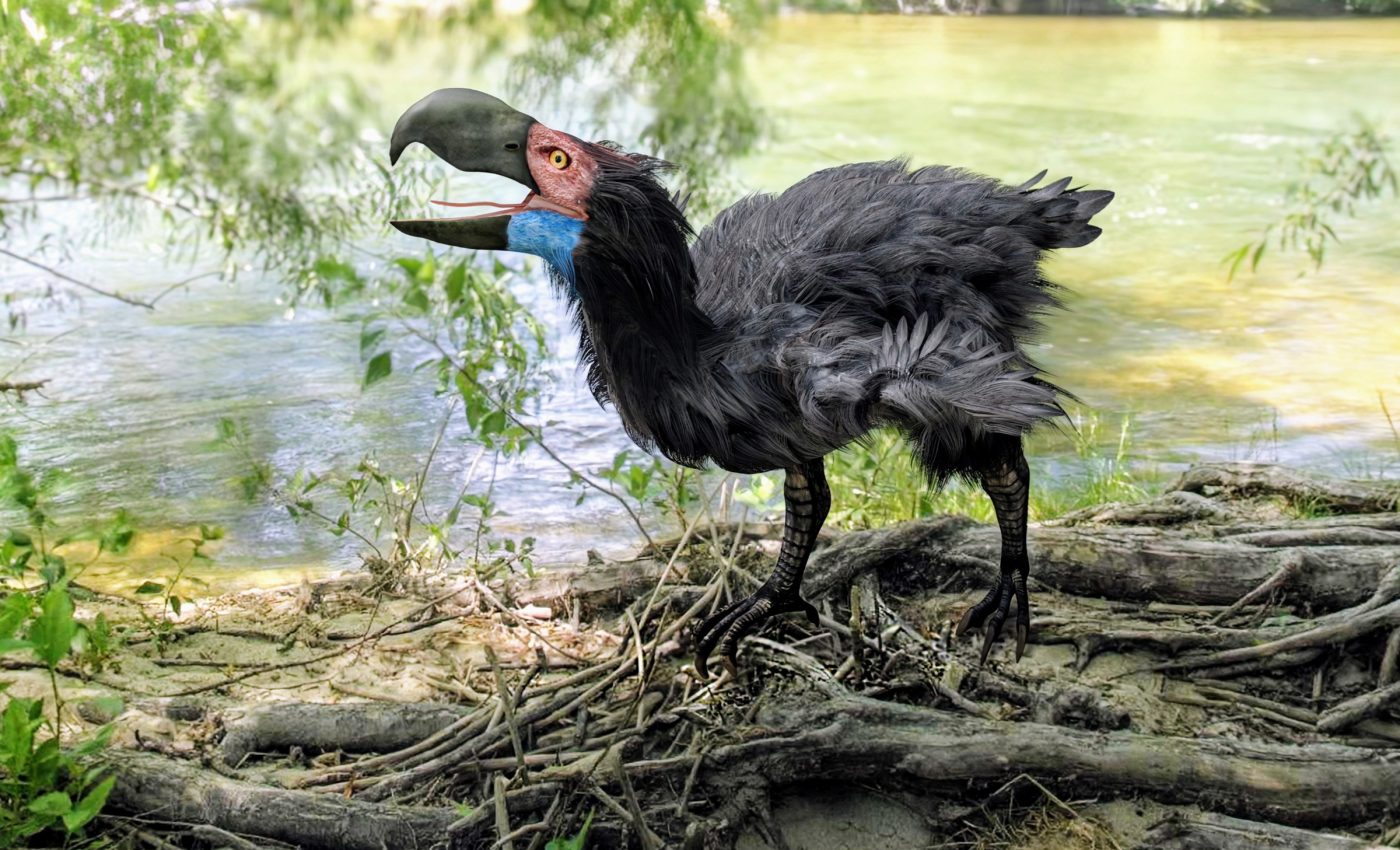
"Terror birds" ate meat and dominated the planet long ago
The fossilized remains of a giant “terror bird,” recently discovered in the sandy landscapes of South America’s Tatacoa Desert, tells the story of a formidable predator from the Phorusrhacid family.
A new study focuses on these giant, meat-eating predators, providing remarkable insights into the diverse wildlife that roamed the world in very ancient times.
What are Phorusrhacids?
Phorusrhacid birds, better known as “terror birds,” were some of the most impressive predators to ever walk the Earth. These flightless birds lived in South America from about 60 million to 2 million years ago.
Standing up to 10 feet tall, they had massive, hooked beaks and really strong legs built for running, Basically, they were the top predators of their time.
Terror birds dominated their environment by hunting small to medium-sized animals. They could sprint at high speeds to chase down prey, using their powerful beaks to deliver lethal strikes.
Some scientists believe they might have even hunted in packs, although that’s still up for debate. Their reign lasted for millions of years, filling the gap left by the dinosaurs’ extinction.
Leg bone of an ancient Phorusrhacid
At the center of this fascinating narrative is a leg bone. This relic from the Miocene epoch, a period dating back around 12 million years, holds within it stories about the ancient birds of prey that roamed the continent.
Dr. Siobhán Cooke is an associate professor of functional anatomy and evolution at the Johns Hopkins University School of Medicine.
He noted that the size of the bone indicates that this terror bird may be the largest known member of the species identified to date, approximately 5 to 20 percent larger than known Phorusrhacids.
The bone’s physical attributes provide an intriguing subplot. It contains deep pits peculiar to Phorusrhacids and potential teeth marks of a prehistoric caiman, Purussaurus.
The physical evidence seems to point to a fatal altercation with a reptilian adversary.
“We suspect that the terror bird would have died as a result of its injuries given the size of crocodilians 12 million years ago,” said Dr. Cooke.
Distribution of Phorusrhacid terror birds
The unearthed fossil, found as far north as Colombia, expands our understanding of the geography of terror birds, which have been primarily associated with Argentina and Uruguay.
The research hints at a diverse and thriving ecosystem, markedly different from the landscapes we see now.
This ancient environment, now a desert, was home to primates, hoofed mammals, gigantic ground sloths, glyptodonts (essentially, gigantic armadillos the size of cars), and terror birds.
The seriema, a modern long-legged bird native to South America, is considered a distant relative of Phorusrhacids.
“It’s a different kind of ecosystem than we see today or in other parts of the world during a period before South and North America were connected,” noted Dr. Cooke.
Studying Phorusrhacid terror birds
The discovery opens a window of possibility that additional fossils of terror birds may lie unidentified in museum archives.
“It’s possible there are fossils in existing collections that haven’t been recognized yet as terror birds because the bones are less diagnostic than the lower leg bone we found,” said Dr. Cooke.
The fossil also prompts us to envision an environment now lost to time, populated by long-extinct creatures that once dominated the fauna.

“It would have been a fascinating place to walk around and see all of these now extinct animals,” noted Dr. Cooke.
This remarkable find, the first of its kind from the site, is a tribute to the rich biodiversity that once adorned our planet.
It nudges us to view the past through a lens of awe and curiosity, and to appreciate the diversity and beauty of the life forms that populated Earth millions of years ago.
The terror bird’s legacy
The discovery of this massive terror bird sheds light not only on ancient ecosystems but also on the evolutionary story of apex predators.
The physical characteristics of this bird – its powerful leg bones and sharp beak — highlight the specialized adaptations that allowed it to thrive in its environment.
These adaptations may have provided the terror bird with the speed and agility to hunt effectively, filling a predatory role in the food chain much like large cats or raptors do today.
By understanding the terror bird’s evolution, researchers hope to uncover insights into how apex predators adapt to environmental shifts, contributing valuable knowledge to evolutionary biology.
Fossil discoveries on the horizon
This fossil, potentially one of the largest known of its kind, also serves as a reminder that more discoveries await in the Tatacoa Desert and beyond.
While Colombia is not typically recognized as a hotbed of fossil discovery compared to regions like Argentina or North America, recent findings like this highlight its hidden potential.
Paleontologists are hopeful that ongoing exploration of South American sites will yield further specimens, expanding our understanding of Miocene-era ecosystems.
This research, along with improved fossil identification techniques, may pave the way for unearthing additional terror bird remains, helping scientists reconstruct the behaviors, habitats, and interactions of these ancient predators.
The study is published in the journal Palaeontology.
—–
Like what you read? Subscribe to our newsletter for engaging articles, exclusive content, and the latest updates.
Check us out on EarthSnap, a free app brought to you by Eric Ralls and Earth.com.
—–













